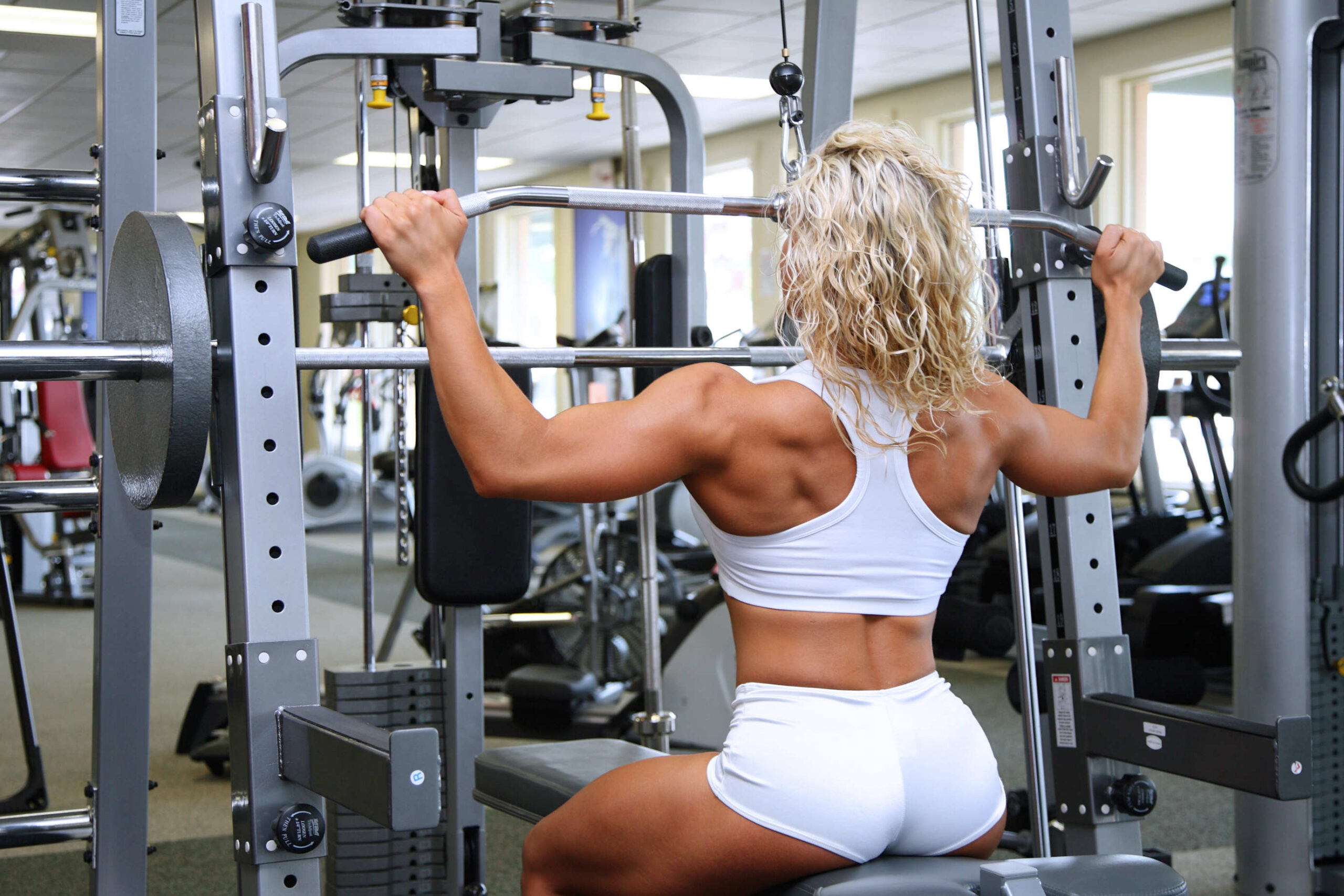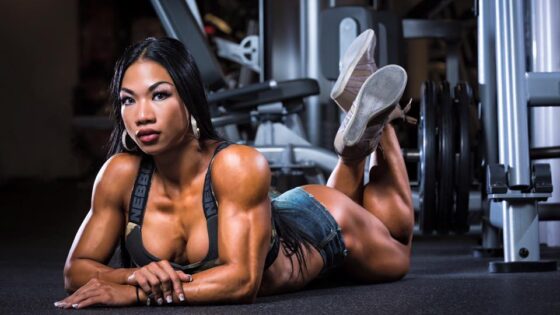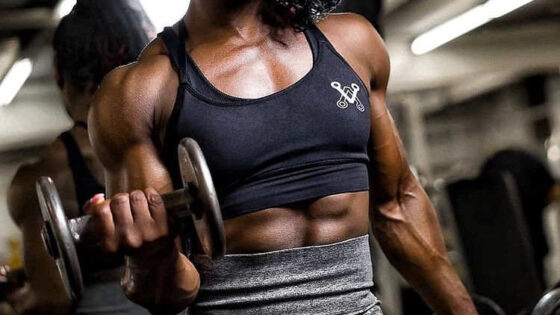How to build Muscle as a Woman
For a long time, women and muscles weren’t connected, apart from the best athletes. But that has radically changed: Many women now know that strength training does not turn them into a mass of muscles without feminine curves, this is because women simply lack the genetic predisposition for this.
A Good Muscle Condition is Healthy
Because we sit a lot in everyday life, we load our bodies very unevenly. Especially the back, the calves, the muscles of the back of the thighs, the buttocks are not sufficiently challenged by the modern lifestyle. The consequence is a unilateral weakening, causing muscle discomfort, which in turn leads to discomforts such as tension, back pain, or headaches
In general, our strength is not in very good shape, after all, most of us do not work very hard physically. We should compensate for that because we can use more muscles.
Benefits of Muscle Development in Women
- Improves Sports Performance
Today it is widely recognized that increased strength or muscle development has a positive effect on performance in all sports, be it running, golf, swimming, handball, sailing, or horse riding.
Having more muscle mass not only increases your performance level because it makes you stronger, faster, and more resistant, but it also protects you from injury because your joints are better stabilized and your bones are strengthened. Also, when strength training is done, the risk of injury is very low.
- Raise Your Self-Esteem
Weight training improves your posture and gives you a well-defined body. The extra muscles can also tighten the skin in some places, because the muscles press against the skin from the inside, so that their tension increases, improving the definition of the body silhouette.
Muscles: Differences Between Women and Men
There are anatomical differences between men and women that affect strength and muscle development potential. Both genders have the same muscle fiber type distribution, but women have fewer muscle fibers overall, and they are also smaller than men. A woman between 31 and 35 years old has an average muscle mass of 74 lb, while a man of the same age group weighs 90 lb.
Muscle Strength in Women
A strength training program for women should aim to precisely stimulate muscle fibers. This means that the result of strength and muscle development in women depends even more than in men on whether they are training with very heavyweights. Because to stimulate the growth of muscle fibers, you have to train at least until you reach hypertrophy, which is achieved with 8 to 12 maximum repetitions possible.
Women have fewer muscle fibers compared to men, this is reflected in 40% less overall body strength, and women mainly lack upper body strength. Therefore, it is immensely important to the athletic performance that women not only focus on their natural strengths in strength training. Instead, training should primarily strengthen the upper body.
Hormones and Muscle Growth: Differences Between Women and Men
Even in women with comparatively high concentrations of androgens, the “male” sex hormones, which also include testosterone, constitute only a minimal amount compared to the androgen load in the male body. A higher amount of androgens ensures, among other things, that men can build more muscles in absolute terms and formless body fat. Men have about 17 to 33 lb of body fat and women have about 22 to 44 lb. The so-called human growth hormone (HGH), which is present in higher concentrations in the female body than in the male and which also accumulates tissue, and compensates for the lower level of testosterone.
Protein
Proteins are muscle-building materials. They are made up of amino acids, some of which the body cannot manufacture on its own. In this case, it is an essential amino acid. Without physical activity, you need around 0.8 g of protein per kg of body weight. This recommendation applies to a balanced diet, with a protein content of around 10-15%. For strength athletes, the protein requirement increases to 1.7 g / kg of body weight, and the nutritional distribution is also different in a muscle-building diet: In this case, protein should constitute around 20-30% of the diet.
Carbohydrates
They provide the body and, above all, muscle cells with the energy necessary for effective strength training. In addition, they ensure the release of insulin, and this hormone sets in motion the storage of amino acids in the muscles, thus activating muscle building. 40 to 50% of the energy consumed should come from carbohydrates. You should give preference to complex carbohydrates and avoid simple carbohydrates.
Fats
The muscle-building diet consists of a balanced diet rich in carbohydrates, protein, and moderate amounts of fat. Between 20-30% of daily calories, fat should provide as many calories as protein. However, since 1 gram of fat has 9 calories and 1 gram of protein only 4 calories, you should eat less than half the fat as protein.
Regarding the composition of fats, these proportions are recommended based on the total daily caloric intake:
Saturated Fatty Acids: From 7% to a maximum of 10% of the total energy intake
Monounsaturated Fatty Acids: Approximately 15% to 20% of total energy intake (eg, olive oil, rapeseed oil, hazelnuts)
Unsaturated Fatty Acids: Between 8% to a maximum of 10% of the total energy intake (eg, safflower oil, sunflower oil, chia seeds)
You should also make sure you have an adequate supply of Omega-3 fatty acids, these are found in fatty fish such as salmon and mackerel, avocados, eggs, and flaxseed oil.
Diets and Muscle Mass
Low carb diets, the ketogenic diet, or the protein diet are often mistakenly viewed as great forms of nutrition for building muscle due to their high protein content, but they are far from ideal if you want to build muscle. One reason for this is that carbohydrates are our most effective “fuel”. If we eliminate it, we are limited in sports like strength training. Another reason is low insulin release due to constantly low blood sugar – this can be an effective aid in breaking down fat but is a hindrance when it comes to building new muscle mass because insulin triggers protein synthesis. of muscles.
In addition to macronutrient distribution, you should also make sure you have a good supply of all the important vitamins and minerals.
References
https://www.ncbi.nlm.nih.gov/pmc/articles/PMC5523796/
https://www.ncbi.nlm.nih.gov/pmc/articles/PMC4836564/
https://newsinhealth.nih.gov/2020/03/maintain-your-muscle












